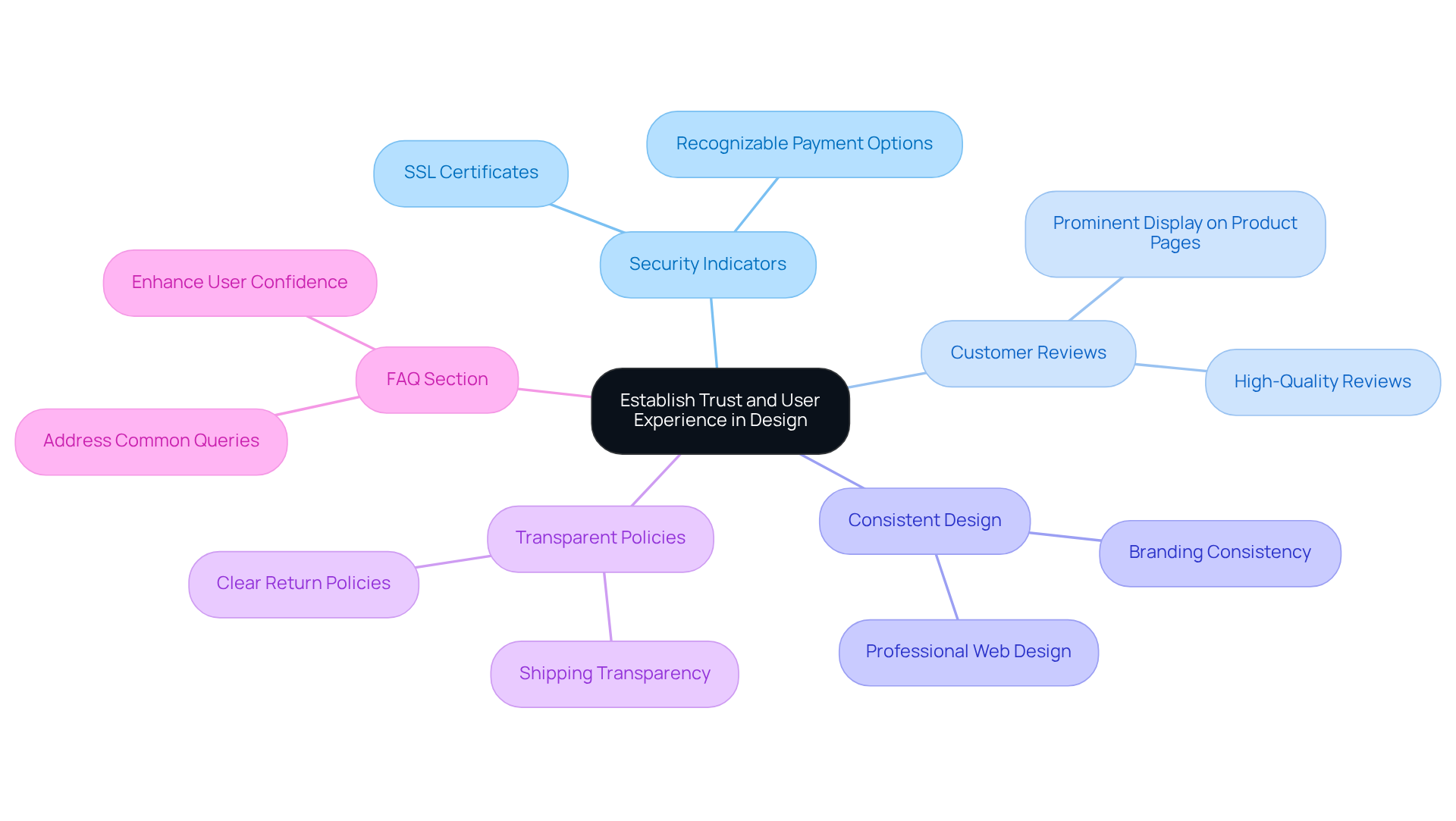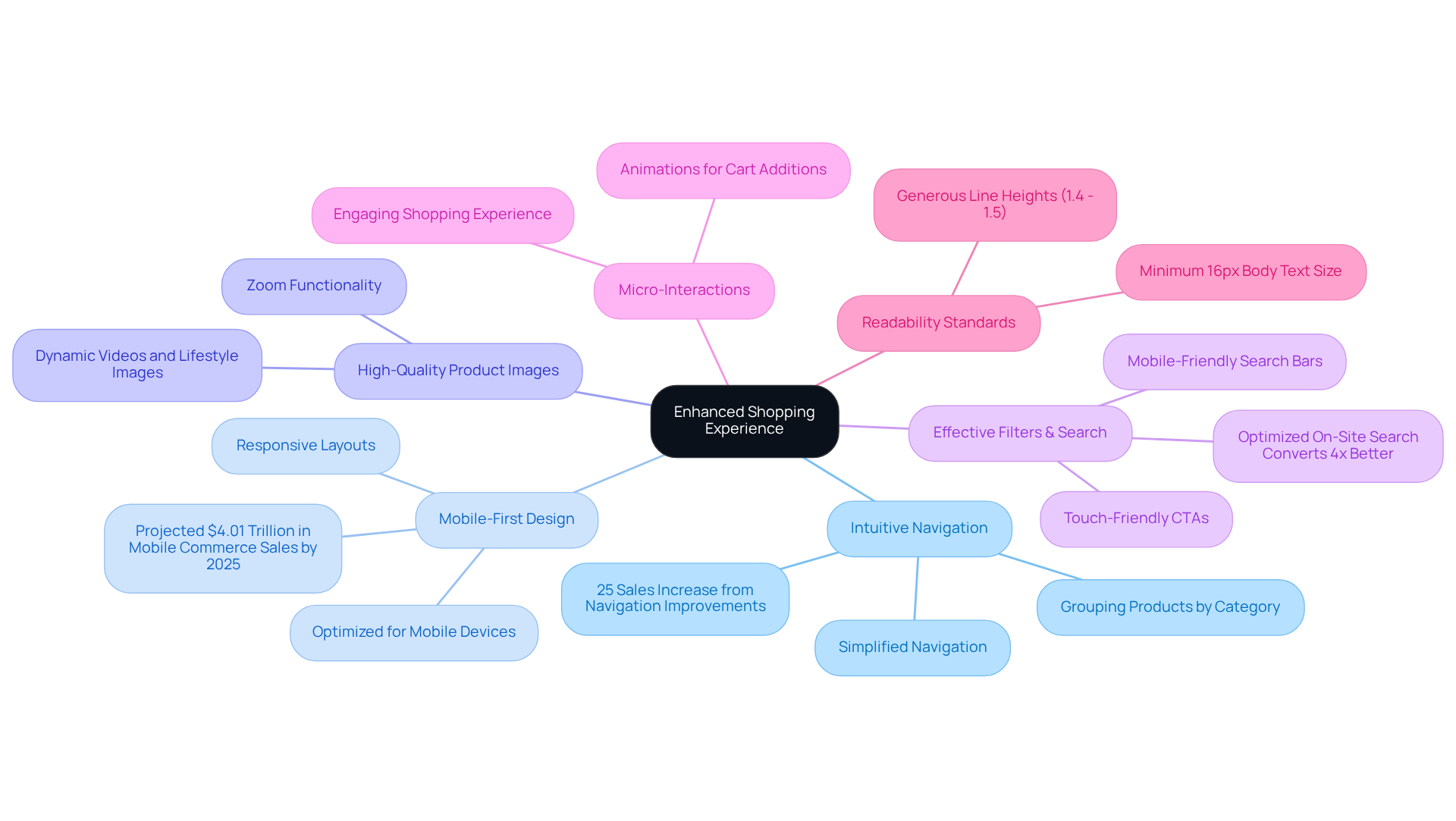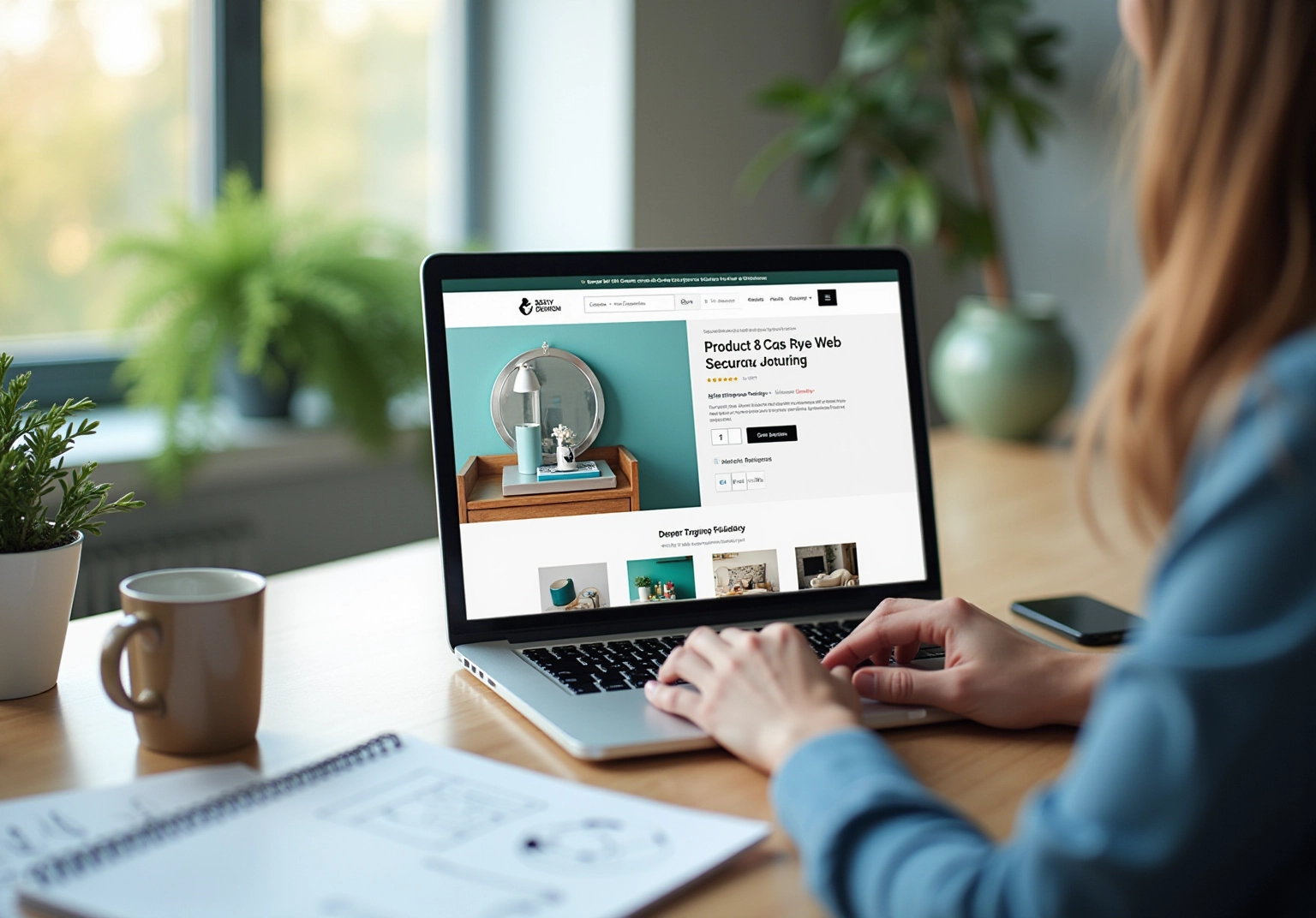
Overview
To significantly enhance sales on e-commerce websites, it is imperative to:
- Establish trust through security indicators
- Optimize user experience with intuitive design
- Employ data-driven strategies such as A/B testing
Critical elements that contribute to higher conversion rates and improved customer satisfaction include:
- Trust signals
- Mobile-first design
- High-quality visuals
- Continuous performance testing
By implementing these practices, businesses can effectively engage their audience, fostering a sense of reliability and satisfaction that drives sales.
Introduction
Creating a successful e-commerce website is akin to crafting a captivating storefront in the digital realm, where trust and user experience reign supreme. As online shopping continues to surge, it is imperative for businesses to understand the key design practices that can significantly boost sales. However, with a myriad of strategies available, determining which elements will resonate with customers and drive conversions is crucial. This article delves into essential web design practices that not only enhance user experience but also instill confidence, ultimately transforming casual browsers into loyal buyers.
Establish Trust and User Experience in Design
To establish trust in your e-commerce platform, it is essential to incorporate clear security indicators, such as SSL certificates and recognizable payment options. Prominently displaying customer reviews on product pages provides vital social proof. Furthermore, a professional and consistent web design for e-commerce websites across your online presence significantly enhances credibility. For instance, a study revealed that websites effectively integrating trust signals can experience conversion rates soaring by as much as 20%. Additionally, transparent policies regarding returns and shipping alleviate customer concerns, increasing the likelihood of purchase completion. A well-structured FAQ section addresses common queries, further bolstering user confidence in your brand.

Implement Key Design Practices for Enhanced Shopping Experience
To enhance the shopping experience, effective web design for ecommerce websites must prioritize intuitive navigation and a streamlined layout. Adopting a mobile-first approach in web design for ecommerce websites is essential, as mobile devices represent a substantial share of e-commerce traffic. Projections indicate that mobile commerce sales will soar to $4.01 trillion by 2025, constituting 59% of total retail eCommerce sales.
High-quality product images equipped with zoom functionality are vital in web design for ecommerce websites, enabling customers to scrutinize details closely. Furthermore, effective filters and robust search functionalities in web design for ecommerce websites—including mobile-friendly search bars and touch-friendly CTAs—can significantly elevate product discoverability, leading to improved conversion rates. A notable case is a prominent fashion retailer that reported a 25% increase in sales after simplifying its navigation and enhancing its search capabilities.
Additionally, the incorporation of micro-interactions, such as animations when items are added to the cart, is a crucial aspect of web design for ecommerce websites that fosters a more engaging shopping experience. These subtle design features not only enhance customer satisfaction but also encourage repeat visits, ultimately driving sales.
In web design for ecommerce websites, it is also crucial to ensure that body text is no smaller than 16px and that line heights are generous, ranging between 1.4 and 1.5, to improve readability on smaller screens. Testing on real devices is vital in the process of web design for ecommerce websites to identify issues with touch targets and performance, ensuring a seamless experience for the user.

Leverage Data and Testing for Continuous Improvement
Utilize analytics tools to meticulously track user behavior on your website, identifying critical areas where visitors drop off or encounter difficulties. A/B testing emerges as a crucial strategy for comparing different design components, such as button colors or layout changes, to discern which versions yield improved conversion outcomes. This methodology can significantly enhance conversion optimization (CRO) by facilitating adjustments to various site elements.
For instance, a retail brand that tested two distinct checkout processes discovered that a streamlined version decreased cart abandonment by 15%. Given that cart abandonment rates in e-commerce hover around 70%, this notable improvement underscores the necessity of A/B testing in effectively addressing this pervasive issue.
Consistently assess your site's performance metrics and modify your strategies accordingly. This iterative approach not only enriches user experience but also ensures that your website evolves in alignment with changing consumer preferences and market trends.
As Nehal states, 'A/B testing isn’t just a tactic; it’s a revelation in the e-commerce arena, transforming guesswork into precision-driven strategies that catapult your business to new heights.'
Furthermore, it is imperative to run A/B tests for a sufficient duration to achieve statistically significant results, thereby avoiding the common pitfall of premature conclusions.

Conclusion
Establishing a successful e-commerce website is fundamentally rooted in a strategic combination of trust, user experience, and ongoing improvement. By prioritizing essential elements such as security indicators, transparent policies, and a polished design, online retailers can cultivate a robust sense of trust that not only encourages customer engagement but also drives sales. The implementation of intuitive navigation paired with a mobile-first approach significantly enhances the shopping experience, ensuring customers can effortlessly discover and interact with products.
Key insights from the article highlight the critical role of:
- High-quality visuals
- Efficient filtering options
- Engaging micro-interactions that captivate users throughout their shopping journey
Furthermore, the focus on data-driven strategies, including A/B testing and analytics, underscores the necessity of adapting to user behavior and preferences. This iterative approach not only bolsters user satisfaction but also results in notable improvements in conversion rates.
In a rapidly evolving digital landscape, embracing these best practices is vital for any e-commerce business aspiring to thrive. By investing in trust-building design elements and harnessing data for continuous optimization, retailers can create a compelling online shopping experience that aligns with the expectations of modern consumers. Adopting these strategies not only enhances sales but also nurtures long-term customer loyalty, paving the way for sustained success in the competitive e-commerce arena.
Frequently Asked Questions
How can I establish trust in my e-commerce platform?
You can establish trust by incorporating clear security indicators like SSL certificates, using recognizable payment options, and prominently displaying customer reviews on product pages.
Why are customer reviews important for an e-commerce site?
Customer reviews provide vital social proof, which can enhance credibility and encourage potential buyers to make a purchase.
What role does web design play in building trust?
A professional and consistent web design across your online presence significantly enhances credibility and can lead to higher conversion rates.
How much can trust signals impact conversion rates?
Websites that effectively integrate trust signals can experience conversion rates soaring by as much as 20%.
What policies should I be transparent about to increase customer confidence?
Transparent policies regarding returns and shipping can alleviate customer concerns and increase the likelihood of purchase completion.
How can a FAQ section benefit my e-commerce site?
A well-structured FAQ section addresses common queries, which can further bolster user confidence in your brand.
FAQs











